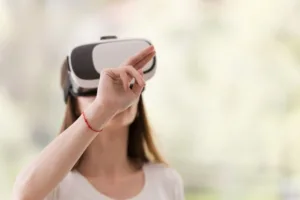For the last three years in my undergraduate classes at the University of Colorado-Denver, I have surveyed each incoming cohort (2-3 classes per year) about their use of and experience with virtual reality. What we see tells us a lot about the penetration of immersive technologies in the higher education setting, especially among teacher candidates (pre-service teacher).

Here are my most recent findings in this long-running calculation:
- Nearly 43% of UCD students have tried VR before. Still, for the first time, the number of undergrad students having tried VR seems to have leveled off. An expected upwards trajectory was not in evidence. Is this the first sign that we have reached a possible saturation point for the youth market? One wonders. Of course, this figure means 57% of course-enrolled students have never used VR, prior to taking my classes.
- A mere 3.7% of my students have used virtual reality in any way associated with their university coursework. What happened to the supposed energy of virtual reality in the educational marketplace and classrooms in particular? Forget the hype. It’s a dismal stat. There is no doubt.
- And, oh yeah, about 16% of students overall experience considerable visual discomfort, nausea or dizziness when viewing virtual reality. (That makes sense, supported by worldwide vision health research, which pegs the worldwide percentage around 14%, with higher incidence in lower socio-economic settings.) But the last two semesters, I have found it quite difficult to get students in my classroom to put on the HMD, due to unfortunate previous experiences they have undergone. In the semester we just concluded, only two or three students were willing to try my “extremely safe” VR simulations—the highest incidence of disinterest or outright rejection ever—and nearly a third of the student in my physical classroom had negative (discomfiting) previous experiences with virtual reality.
So, if you tend to see the world pessimistically, these data might suggest that the penetration rate for this emerging technology both in classrooms and the youth market is far below the hype levels we all hear about. On the other hand, if you view the world brimming with optimism, you might see this as beckoning and fertile soil for sales.
The scariest data point is that the penetration of VR into actual classroom instruction at any scale remains miserable. Students are not coming into the system with much VR familiarity; and prospective teachers are not gaining any VR experience in their higher ed preparation, which directly translates into a virtual flat tire when these same students enter their own classrooms upon graduation. And the industry continues to ignore the vision challenges associated with VR, hoping that these will all go away with technological advancements. They will not. (See my past article on that zombie-like theme, if you want to learn more.) Clearly, we have a long way to go on this journey. –Len Scrogan

